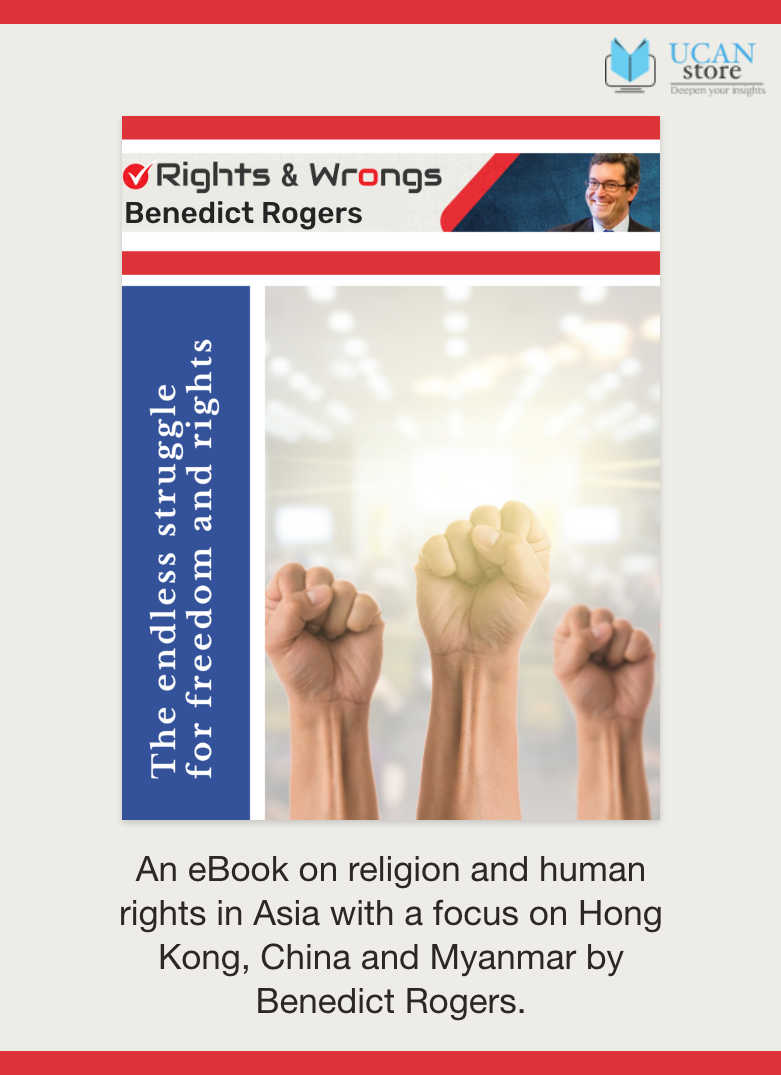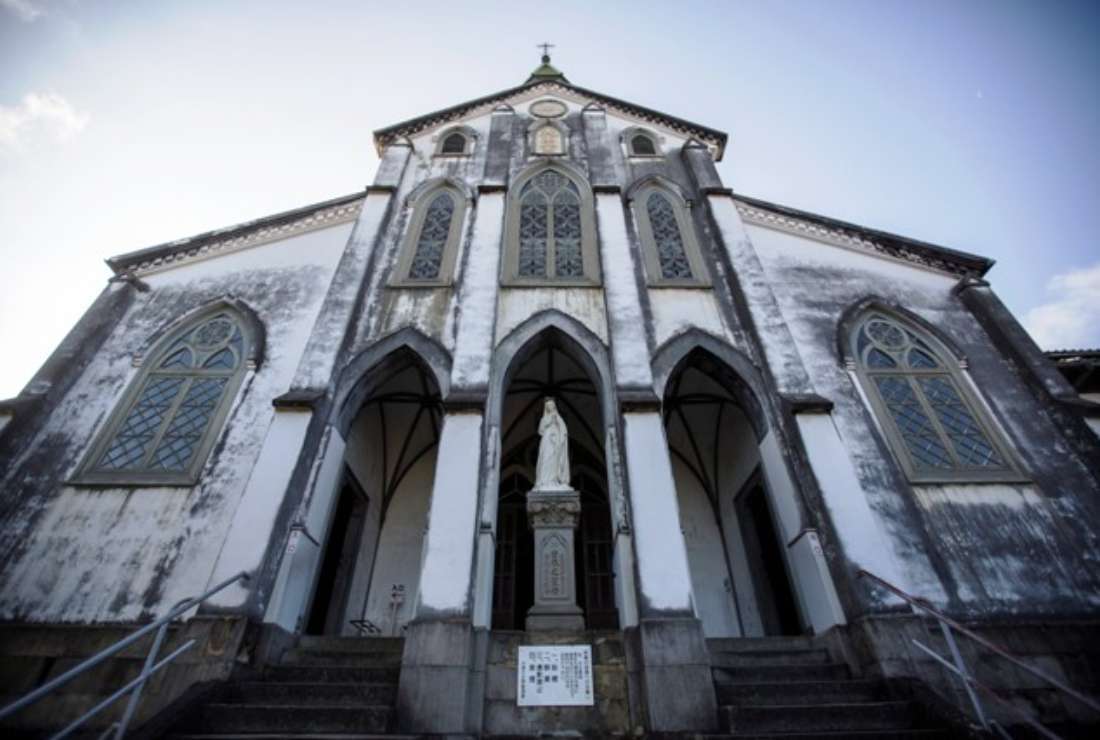

This photo taken on Nov. 22, 2016, shows Oura church, or the Basilica of the Twenty-Six Holy Martyrs of Japan in Nagasaki. The Catholic Church today has a fading community of mostly aged Japanese while the other is a growing community of generally young immigrants who live their faith without reference to the evangelization of Japan. (Photo: AFP)
The number of foreigners living in Japan has reached an all-time high. According to the country’s Immigration Services Agency, more than three million aliens were living in Japan at the end of 2022.
In fact, the agency’s count of 3,075,213 is lower than the actual number because there are undocumented aliens in the country in addition to those who have been processed and recorded officially.
It has been projected that in half a century, nearly 11 percent of the population will be non-Japanese while the population overall will drop from the present 126 million to 87 million.
The largest groups of foreign residents are from China, Vietnam and South Korea. Others from the Philippines, Brazil and other countries of Latin America are reshaping the Catholic Church as they have become the majority of Japan’s Catholics.
For decades, Japan has resisted welcoming immigrants. Almost all the three million are in the country as students, trainees or specialists of one kind or other. However, many of them are in fact immigrants in all but name and legal status. They will remain in Japan either legally or illegally, and increasingly are starting families there, sometimes with Japanese partners.
Japan’s population is declining and the country desperately needs more people to maintain its economy and, as the population ages, the national health insurance system. Speaking at a press conference, Prime Minister Fumio Kishida said, “Time is running out to procreate.”
"Japanese society is not yet ready to welcome newcomers as potentially a part of a new Japanese people"
In fact, the number of births in 2022 dropped below 800,000 for the first time, eight years earlier than had been projected. Each year, about 50 schools are closed because of a shortage of children.
The number of residents aged 65 and over is expected to increase from 28.6 percent to 38.7 percent of the population by 2070.
Even with an unlikely increase in procreation Japan still needs millions of other people, immigrants. An “imported” three million is nowhere near the number the country needs.
However, even though it needs them Japanese society is not yet ready to welcome newcomers as potentially a part of a new Japanese people, one with a variety of ancestries and races.
The shortage of people is affecting all parts of Japanese society. Besides recording a record number of foreign residents, 2022 saw a record decline in the number of yakuza, organized crime gang members. According to the Japan Times, “The number of members and associate members investigated by police in 2022 fell below 10,000 for the first time since Japan enacted the anti-organized crime law in 1991.” Overall, the number of gangsters was 22,400 — a drop of 1,700 from the previous year.
Like the yakuza, Japanese members of the Catholic Church in their country are more and more becoming fewer and fewer. In fact, the majority of Japan’s Catholics are not Japanese. And given the decline in the Japanese population, the aging of congregations and disaffiliation from the Church by the shrinking pool of Japanese young people, the Catholic Church in Japan will remain a community of immigrants at least until the country finds some way to accept outsiders as a real part of Japanese society and culture.
How are those responsible for the management of the Catholic Church responding to this inevitability?
They are not, or, at least not in any way that indicates a creative long-term response.
"The formation of Japanese clergy does not include training in the languages and cultures of immigrants"
In the past, foreign missionaries were sought after and welcomed as agents for the evangelization of Japanese society. Linguistic and cultural training were essential prerequisites for engaging in that.
Today, bishops recruit clergy and religious from overseas for the sake of providing pastoral service to immigrant groups. They are not expected to acquire any skills, linguistic or otherwise, that would advance the integration of non-Japanese Catholics — either themselves or their congregations — as an evangelizing presence in Japanese society.
On the other side, the formation of Japanese clergy does not include training in the languages and cultures of immigrants for the provision of pastoral care and an introduction to evangelizing membership in Japanese society.
The result, with some local exceptions, is the presence of parallel Catholic Churches in Japan. One is a fading community of mostly aged Japanese and the other is a growing community of generally young immigrants who live their faith without reference to the evangelization of Japan.
The pastoral agents in neither Church are able to bridge the linguistic and cultural differences because neither the imported agents nor the native clergy is expected or trained to do so. This delays the integration of newcomers into the Japanese Church and the revivification of that Church.
As is the case in many Asian societies, the Catholic Church in Japan is frequently viewed as an alien presence and shall in fact become one.
Instead, the Church could be a model of the sort of transition that Japanese society as a whole must make. Like Australia, Canada, the United States and other post-ethnic nations, Japan can become a nation with global ancestry.
The Church in Japan could show the benefits of mutual integration and a way to achieve it.
To do so, however, will require much more effort, creativity and openness than it presently musters.
*The views expressed in this article are those of the author and do not necessarily reflect the official editorial position of UCA News.
Help keep UCA News independent
The Church in Asia needs objective and independent journalism to speak the truth about the Church and the state. With a network of professionally qualified journalists and editors across Asia, UCA News is just about meeting that need. But professionalism does not come cheap. We depend on you, our readers, to help maintain our independence and seek that truth. A small donation of US$2 a month would make a big difference in our quest to achieve our goal.